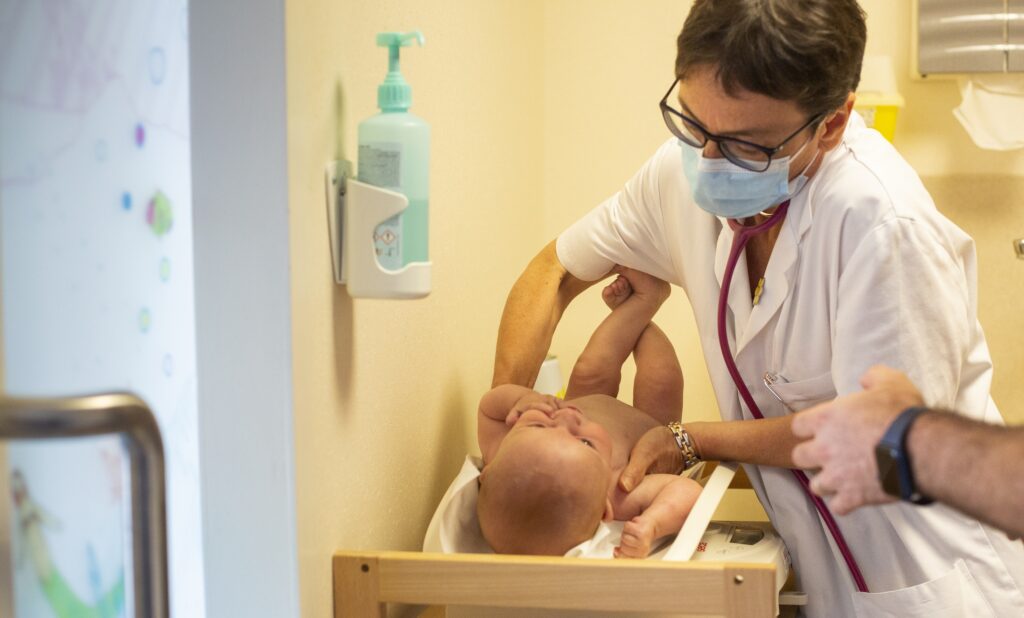
Program presentation
Cellular identities and destinies
A major public health issue
In France, brain tumors are the most common cancer after leukemia in children under 15. They affect almost 500 new children every year (2021 data). Most survivors suffer long-term sequelae and severe treatment, affecting their quality of life and place in society. As a result, these diseases have a significant individual, family and societal impact.

Derailed cellular trajectories
A single cell enables the development of an entire organism. It gives rise to all the cells that make up the human body, a collection of over 30,000 billion distinct cells! Yet all these cells share the same genetic information in their DNA. This DNA, organized into 23 pairs of chromosomes, codes for thousands of genes.
During development, genetic information is read differently by different cell types, such as neurons or muscle cells. As a result, different combinations of genes are activated, depending on the cellular trajectories taken. These trajectories describe how a cell specializes and assumes a specific role in the organism. However, this reading of genetic information can be disrupted. In this case, the cell may follow an abnormal trajectory at the wrong time. This type of error can ultimately lead to inflammatory and neurodegenerative diseases, as well as cancer.
Research areas
The Cell-ID program explores crucial questions in developmental biology, particularly related to neurodevelopment and pediatric brain cancers:
How do cells acquire their identity? Each cell has a genome that functions dynamically and autonomously, but we don’t yet fully understand how this genome directs cell decisions and trajectories over time.
How do these diverse cell populations contribute to the 3D organization of brain tissue? The lack of knowledge about how each cell interacts in time and space limits our ability to develop effective treatments. We cannot, for example, distinguish initial cellular events from those occurring in response to a disease, nor anticipate the effect of a treatment on the different cells of a tissue.
What non-physiological deviations are involved in the onset and progression of brain tumors in children? At present, children with brain tumors are often diagnosed at an advanced stage, when tumor cells have already spread extensively throughout the central nervous system. We need earlier, non-invasive diagnostic methods to detect the disease before symptoms appear, as well as to monitor patients at risk and prevent relapses.

These questions remain unanswered because of two main obstacles:
- The expertise needed with the combination of technologies, which requires a specific framework for cooperation and coordination between research institutions and clinics.
- Technologies for cellular and spatial resolution in complex tissues are only now being developed;
- The cost of these methods;
The Cell-ID mission
The Cell-ID research program “Cell identities and destinies” aims to understand the mechanisms governing cell identities and destinies, and to determine when cells go off the rails. Focusing on the normal development of the nervous system, it is also studying the case of certain pediatric brain cancers, which are thought to be linked to a deregulation of cell fate during embryonic development.
Approaches
This involves the use of imaging, functional genomics, data analysis and modeling methods, as well as new complex tissue models. These approaches offer tremendous potential for understanding when, how and why a cell follows a particular fate under normal conditions. They also provide a means of understanding how the cell loses its identity and drifts from its normal destiny during pathologies.
Expected results
Cell-ID, building on the LifeTime 2020 initiative and the concept of cellular interception medicine, will enable understanding of the cellular mechanisms underlying neurodevelopment, while supporting technological advances and the training of the next generation of interdisciplinary scientists. Ultimately, this initiative will pave the way for improved diagnosis, assessment of the risk of disease progression or recurrence, and adaptation of treatments from the earliest stages. It will begin with the study of pediatric brain cancers, with the possibility of extending it to other related pathologies in the future.
The discoveries resulting from this program could represent major advances applicable to other diseases, well beyond those studied here. This project is therefore a unique opportunity to structure the French scientific community and place it at the forefront of international research in the promising field of interception medicine.
